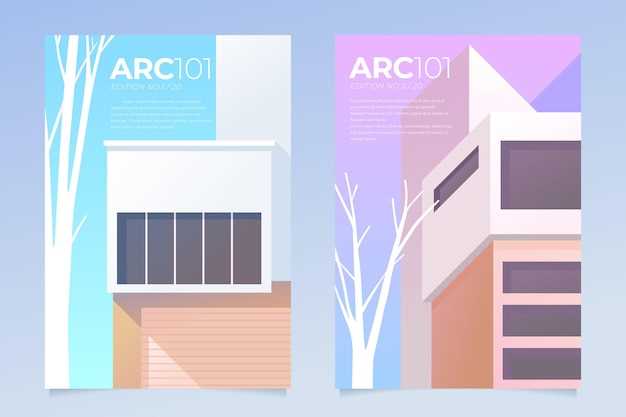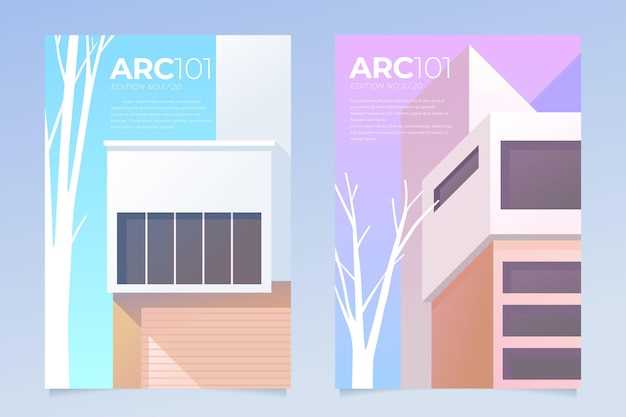In recent years, the need for innovative solutions to complex living conditions has become increasingly evident. Unique approaches to residential and commercial spaces are emerging. These methods emphasize harmony with the surroundings. Buildings are no longer just structures; they are a reflection of the environment and community.
Residents face numerous challenges, from extreme temperatures to limited resources. Adapting to local conditions is essential for both comfort and efficiency. This has led to a rise in creative alternatives that prioritize well-being. By seamlessly blending with nature, these methods forge a deeper connection to the landscape.
Creative strategies draw inspiration from the native ecosystem and utilize local materials. Design choices focus on minimizing energy consumption and maximizing natural comfort. Each project showcases the potential for resilience while catering to community needs. In this way, the quest for responsible living becomes an opportunity for transformation.
Architectural endeavors continue to redefine what is possible within challenging settings. By embracing cutting-edge techniques, visions of the future take shape. The emphasis on environmental respect and functionality paves the way for remarkable solutions that serve both inhabitants and the planet.
Sustainable Architecture in Australia

In recent years, the quest for eco-friendly living has gained significant traction. Many are now looking for ways to harmonize with nature. This shift focuses on creating spaces that respect the environment. Mindful choices are needed for both urban developments and rural escapes. Balancing comfort, aesthetics, and ecological responsibility is key.
Designing homes and buildings is not only about structure. It also encompasses energy efficiency, resource conservation, and environmental impact. An emphasis on renewable materials and innovative technologies creates unique opportunities. For instance, the use of solar energy can drastically reduce utility costs.
- Natural ventilation reduces reliance on artificial cooling systems.
- Water-efficient fixtures help to conserve precious resources.
- Vegetated roofs add insulation and support biodiversity.
- Building orientation maximizes sunlight and minimizes heat loss.
This holistic approach encourages communities to rethink their living spaces, promoting well-being and lower carbon footprints while fostering a deeper connection between inhabitants and their environment.
Natural light plays an essential role in these thoughtful concepts. It enhances mood and reduces energy usage. Large windows and open spaces are common features in well-planned residences. Additionally, incorporating local materials connects structures to their surroundings.
- Utilizing building materials that are abundant in the area.
- Incorporating passive heating and cooling techniques for temperature regulation.
- Integrating landscaping that supports local wildlife.
This movement reflects a broader ethos–one that seeks regeneration rather than depletion. People increasingly recognize their responsibility to the planet. By prioritizing harmony with nature, communities can create vibrant, resilient spaces that support future generations. The journey towards a more responsible way of living is not only beneficial but necessary.
Innovative Designs for Harsh Climates

Creating functional spaces that withstand extreme weather conditions is crucial. Such structures must be resilient, efficient, and adaptable. They not only provide shelter but also maintain comfort. The essence lies in blending materials and techniques to tame the elements. Unique approaches pave the way for effectively addressing environmental challenges.
For instance, thermal mass can be harnessed to regulate indoor temperatures. Natural ventilation systems help to keep interiors cool during sweltering days. Incorporating shading devices protects living areas from severe solar exposure. Rainwater harvesting systems alleviate water scarcity concerns in dry areas.
Designs often utilize local materials which minimize transportation emissions and support the economy. The integration of green roofs can manage stormwater while enhancing insulation properties. Moreover, photovoltaic panels offer innovative energy solutions, reducing reliance on conventional sources. The interplay of these elements facilitates a harmonious balance between functionality and environmental integrity.
Circular principles lead to reduced waste and foster community resilience, ultimately linking inhabitants with their surroundings. Thus, exploring the convergence of functionality, aesthetics, and sustainability plays a pivotal role in shaping the future of building practices. This evolution speaks to a deeper understanding of our relationship with nature, positioning innovative solutions at the forefront of modern construction efforts.
Adaptability of Structures to Extreme Weather
The capacity of buildings to withstand severe environmental conditions is crucial. Changing weather patterns demand solutions that can flexibly respond to challenges. Each structure must possess unique qualities to endure various atmospheric stresses. Resilience becomes an integral part of planning and implementation.
Elements of design must prioritize flexibility. Proper material choice plays a significant role. Innovations arise daily, providing new methods to enhance durability. Yet, it’s not just about selecting materials; it’s also about configuration.
Effective strategies encompass orientation, shape, and load distribution. Structures must harness local climate benefits while minimizing drawbacks. Stakeholders must deeply understand the local environment. Doing so directs efforts toward achieving harmony between occupants and nature.
| Weather Condition | Adaptive Feature |
|---|---|
| High Temperatures | Natural ventilation systems |
| Heavy Rainfall | Elevated foundations and drainage solutions |
| Strong Winds | Aerodynamic shapes and reinforced structures |
| Wildfires | Non-combustible materials and strategic landscaping |
By integrating these adaptive features, it becomes possible to achieve safety and comfort, even in unpredictable settings. Proactive approaches can mitigate damage, starting from the foundation to the rooftop. This integration fosters a harmonious relationship with the environment while ensuring major challenges are addressed effectively.
Passive Solar Design Techniques
Harnessing the energy of the sun can enhance indoor comfort and efficiency. By strategically planning spaces, one can take full advantage of sunlight. This approach revolves around natural heat regulation. The concept is simple yet profound. It focuses on meeting human needs while using available resources effectively.
Optimizing window placement is crucial. Proper orientation allows sunlight to warm interior spaces effectively. Deep overhangs can control excessive heat during peak summer. Insulation is another vital element, keeping warmth during cooler periods. Solar heat gain is often maximized during winter months for added coziness in living areas.
Thermal mass, such as concrete or brick, absorbs heat and releases it gradually. In regions with large temperature swings, this technique provides stability. Roofing materials can also influence temperature regulation within a building. Light-colored roofs reflect sunlight and reduce heat accumulation.
Incorporating vegetation into designs can significantly impact energy dynamics. Trees provide shade and cool air, enhancing comfort levels around the structure. Outdoor spaces become greener and more inviting, creating harmonious environments. This connection with nature is not only beneficial but also aesthetically pleasing.
Natural ventilation plays a vital role in maintaining air quality and comfort. Cross-ventilation allows breezes to flow, reducing reliance on mechanical solutions. Designing openings to facilitate airflow is essential for achieving this balance. Ultimately, these elements harmonize to create spaces that respond intelligently to their surroundings.
Water Harvesting Solutions
Collecting and utilizing water efficiently can make a significant impact. In areas with erratic rainfall, every drop counts. Engaging in practices that maximize water use proves essential. This goes beyond mere conservation; it harnesses natural resources intelligently.
- Rainwater collection systems
- Greywater recycling
- Underground cisterns
- Swales and contouring
Among these methods, rainwater collection stands out due to its simplicity and effectiveness. It involves capturing water from roofs and directing it into storage tanks. This practice is not only practical but also empowers communities to take control of their resources. Many systems can be tailored to fit diverse needs and preferences.
- Evaluate your rainfall patterns.
- Choose an appropriate storage solution.
- Install a filtration system for clean water.
- Maintain the system regularly.
Greywater recycling, another compelling option, allows for the reuse of water from sinks and showers. With careful treatment, this water supports irrigation or other non-potable uses. Implementing such strategies reduces dependency on municipal sources. The potential savings and environmental benefits are noteworthy.
- Install dual plumbing systems.
- Use biodegradable soaps to minimize contamination.
- Educate users about proper practices.
Incorporating underground cisterns provides an alternative for larger volumes of harvested water. Not only do they store significant amounts, but they also help manage stormwater runoff. Creating swales and contouring land can further enhance water infiltration and reduce erosion. Each solution contributes uniquely to resilience.
Collectively, these methods embody a proactive approach to water management. They enhance not only efficiency but also community awareness and involvement. By adapting to local conditions and needs, it becomes possible to create a resilient landscape. These practices lay the groundwork for a future focused on stewardship. Making informed decisions today leads to a more viable tomorrow.
Local Materials for Energy Efficiency
Utilizing materials sourced from the region can significantly reduce energy consumption in buildings. It minimizes transportation costs and carbon footprint. Additionally, local resources are often more suited to the environmental conditions of the area. This approach enhances thermal performance and creates a stronger connection to the site.
- Natural stone for insulation and durability.
- Timber from sustainably managed forests.
- Recycled metals for structural integrity.
- Cob and rammed earth for natural thermal mass.
The use of these materials not only promotes energy efficiency but also supports the local economy, effectively creating a loop that benefits the community while ensuring comfort and resilience in building practices. By embracing indigenous resources, architects and builders can establish designs that naturally align with climatic demands, thus lowering reliance on artificial heating and cooling systems.
Incorporating local ingredients into construction methods invites a deeper appreciation of the surrounding landscape. For instance, timber not only provides warmth but also aesthetic appeal. Stone blends seamlessly with the terrain, enhancing visual harmony. These elements work in unison, ensuring structures remain harmonized with their environment.
- Identify local resources that suit specific needs.
- Evaluate the lifecycle impact of chosen materials.
- Incorporate natural ventilation systems wherever feasible.
- Design with passive energy strategies in mind.
This holistic approach creates a unique identity, fostering a sense of place that resonates with inhabitants. By prioritizing locality and functionality, the built environment not only thrives but also prepares for future challenges. Collectively, these practices contribute to a healthier ecosystem and a more comfortable living experience.
Future Trends in Sustainable Building
The landscape of construction is evolving rapidly. New concepts and technologies continuously emerge, reshaping how we think about creating structures. A pivotal focus is on enhancing energy efficiency and reducing environmental impact. These shifts are driven by both necessity and innovation.
One prominent direction is the integration of renewable energy sources directly into buildings. Solar panels and wind turbines are becoming commonplace, powering homes and offices while reducing reliance on traditional energy grids. Moreover, advanced insulation techniques are improving thermal performance, leading to lower energy consumption. As a result, structures are not just shelters; they are becoming self-sufficient entities.
Another engaging trend is the utilization of recycled materials. This approach minimizes waste while also providing unique aesthetic qualities. Repurposed wood, reclaimed metal, and even recycled glass are starting to define modern aesthetics. Additionally, biophilic elements are increasingly incorporated, blending nature with built environments to create harmonious living spaces.
The future of building is also marked by digitization. Smart technologies are facilitating the creation of intelligent environments that adapt to users’ needs. From automated lighting to heating systems that learn based on usage patterns, innovation continues to enhance comfort and efficiency. This integration of technology sets the stage for unprecedented changes in how we interact with our surroundings.
All these trends highlight a collective shift towards thoughtful, responsible building practices. As the world confronts challenges like climate change, the potential for creative solutions will only expand. The way we manage resources and design our spaces is crucial for a viable future. Moving forward, collaboration among architects, designers, and builders will foster groundbreaking advancements that prioritize both comfort and ecological stewardship.
Eco-Conscious Bathroom Renovations

Revamping your bathroom can be a rewarding experience. It offers an opportunity to not only refresh the space but also to implement practices that are kind to the planet. Implementing thoughtful changes may enhance both aesthetics and functionality. Many homeowners are now prioritizing eco-friendly options. This approach can lead to significant savings in energy and water. A small change can make a big impact.
Consider using materials that are sourced responsibly and have a lower environmental footprint. Reclaimed wood, recycled tiles, and low-VOC paints contribute significantly to reducing waste. Additionally, integrating fixtures that utilize less water, such as dual-flush toilets and low-flow faucets, can aid in conservation efforts while still delivering performance and style. For example, energy-efficient lighting not only reduces electricity bills but also creates a warm, inviting atmosphere.
| Element | Eco-Friendly Option | Benefit |
|---|---|---|
| Faucets | Low-flow faucets | Reduce water consumption |
| Lighting | LED lights | Energy efficiency |
| Tiles | Recycled materials | Minimized waste |
| Countertops | Reclaimed stone | Unique aesthetics |
| Paint | Low-VOC options | Improved air quality |
Choosing eco-conscious materials and products not only contributes to environmental well-being but can also elevate the overall appeal of the space. When planning your renovation, think about incorporating natural light; it can transform a small room into a bright, airy oasis that feels much larger than it is. Innovative storage solutions can help reduce clutter while maintaining a clean look, favoring both form and function.
Ultimately, taking a responsible approach to bathroom upgrades encourages a healthier living environment. By being intentional about selections, you can create a space that reflects personal style and cares for the earth. There’s a fulfilling satisfaction in knowing that your choices today can lead to a better tomorrow.
Utilizing Recycled and Sustainable Materials
The integration of reclaimed and eco-friendly resources creates a vital connection between human habitation and the environment. These materials, which often have a rich history, provide unique character and charm to structures. By choosing such resources, not only can we reduce waste, but we also contribute to a reduced ecological footprint. This approach enhances the overall resilience of constructions, allowing them to better withstand the tests of time and climate.
Reusing old elements, such as bricks and timbers, fosters a sense of continuity. Additionally, the use of locally sourced materials minimizes transportation emissions. Widespread community involvement in sourcing these resources can lead to an enhanced local economy.
Incorporating salvaged components or recycled fibers leads to innovative approaches for building. For instance, using bottles or cans as wall fillers increases insulation and reduces landfill contributions. Leveraging these materials can not only fulfill practical purposes but also inspire creativity and artistry in the construction process, transforming ordinary spaces into extraordinary places.
Moreover, the transition to biodegradable substances or rapidly renewable resources brings an elevated awareness to environmental responsibility. Investing in these choices ensures a healthier planet for future generations, fostering a deeper understanding of our relationship with the Earth and its finite resources.
Ultimately, choosing reclaimed and organic materials exemplifies a commitment to a far-reaching vision, where ecological mindfulness represents a lifestyle choice rather than simply a trend. It invites us to rethink how we build and how we live, paving a path towards greater harmony between modern living and nature.
Water-Saving Fixtures and Appliances
Efficient use of water is crucial in today’s world. Many people are becoming aware of their consumption habits. This is especially true in regions with limited water resources. Smart choices can lead to substantial reductions in waste.
Modern fixtures and appliances offer a range of opportunities. Low-flow showerheads, efficient faucets, and dual-flush toilets are great examples. These innovations greatly minimize the volume of water used while maintaining comfort. Moreover, smart dishwashers and washing machines can optimize performance based on load size, which helps in conserving resources.
When selecting equipment, considering technology is vital. Advanced options often come with features that monitor water usage. For instance, some showers can display the amount consumed in real-time. This awareness can encourage users to adjust their habits accordingly. Choosing the right products not only benefits the environment but can also lead to cost savings.
It is essential to understand the long-term benefits of investing in such solutions. Water-saving fixtures are not just about conservation; they’re about enhancing overall quality of living. A harmonious blend of efficiency and functionality can redefine daily routines, transforming ordinary tasks into eco-friendly practices.
This mindful approach to resource management resonates deeply with many homeowners. By prioritizing products that reduce water consumption, they contribute to a broader cultural shift. Therefore, the adoption of these thoughtful solutions proves invaluable for future generations.
Video:
The ultimate guide to passive home design
The ultimate guide to passive home design by HOME TUBE 123,485 views 1 year ago 6 minutes, 7 seconds
Q&A:
What are some key principles of sustainable architecture in harsh climates like those in Australia?
Sustainable architecture in Australia, especially in harsh climates, emphasizes several key principles: passive design, which uses natural elements for heating and cooling; the use of renewable materials that minimize environmental impact; water conservation strategies, such as rainwater harvesting and greywater recycling; and the integration of energy-efficient technologies, such as solar panels and high-performance insulation. By implementing these strategies, architects create buildings that not only withstand the extreme conditions but also contribute positively to the environment.
How do innovative designs address the unique environmental challenges faced in Australia?
Innovative designs in Australian architecture address environmental challenges through various strategies. For instance, buildings are often oriented to maximize natural light while minimizing heat gain, which is essential in hot regions. The use of locally sourced materials reduces transportation emissions, while green roofs and walls help regulate temperature and improve air quality. Furthermore, architects often incorporate natural ventilation systems to reduce the need for mechanical cooling, aligning construction practices with the local climate to enhance resilience and sustainability.
Can you provide examples of successful sustainable architecture projects in Australia?
Indeed, there are several notable examples of sustainable architecture in Australia. One prominent project is the “One Central Park” in Sydney, which features vertical gardens that contribute to biodiversity and improve air quality. Another example is the “Green House” in Brisbane, designed by architect Clayton Orszaczky, which utilizes solar power and rainwater harvesting to create a self-sufficient living environment. Additionally, the Sydney Opera House has implemented various sustainability measures, such as energy-efficient lighting and water conservation systems, demonstrating that even iconic structures can adopt sustainable practices.
What role do local materials play in sustainable architecture in Australia?
Local materials play a crucial role in sustainable architecture in Australia by reducing the carbon footprint associated with transportation and supporting the local economy. Using materials that are abundant in the area not only lessens environmental impact but also helps the structures blend harmoniously with their surroundings. For instance, timber sourced from sustainably managed forests can be used for framing and cladding, while stone or earth from local quarries can provide structural integrity and thermal mass. This approach not only enhances the sustainability of the buildings but also celebrates the cultural and geographical identity of the region.
How does the community influence sustainable architecture practices in Australia?
The community significantly influences sustainable architecture practices in Australia by driving demand for environmentally friendly designs and participating in the planning processes. Many Australian communities advocate for sustainability by supporting local initiatives, such as community gardens and eco-villages, which prioritize green building practices. Feedback from residents can lead architects and developers to meet specific needs, ensuring that designs are not only sustainable but also socially responsive. Community engagement helps create awareness and fosters a culture of sustainability, leading to innovative solutions that benefit both the environment and the people living in these spaces.
What are some key principles of sustainable architecture used in Australia?
Sustainable architecture in Australia is centered around several key principles aimed at minimizing environmental impact and enhancing energy efficiency. One fundamental principle is passive design, which takes advantage of natural climate conditions to maintain comfortable indoor temperatures without relying heavily on mechanical heating or cooling systems. This includes aspects like building orientation, the use of thermal mass, and strategic shading to reduce heat gain in hot climates. Additionally, the use of sustainable materials, such as recycled or locally sourced materials, plays a significant role in reducing the carbon footprint of construction projects. Rainwater harvesting and sustainable landscaping techniques further contribute to water conservation, making these designs well-suited for Australia’s diverse and often harsh climates. By integrating these principles, architects in Australia are able to create buildings that not only meet the needs of their inhabitants but also contribute positively to the environment.
